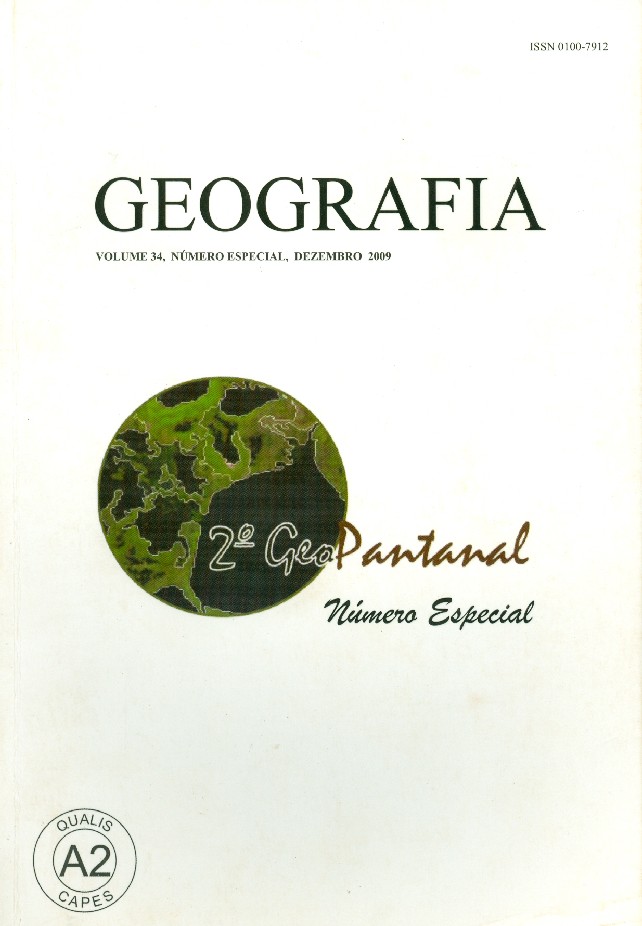RELAÇÃO NDVI E PRECIPITAÇÃO NA BACIA DO RIO COXIM - MS
Resumen
O uso e cobertura vegetal de uma determinada área são dependentes principalmente da disponibilidade hídrica e edáfica da região. Dentre estas, a disponibilidade hídrica apresenta maior variabilidade anual e interanual, ligada aos eventos de precipitação que acabam refletindo no estado/produtividade das plantas. Assim, o objetivo deste trabalho é avaliar a variabilidade espaço-temporal do NDVI na bacia do rio Coxim e compreender sua relação com a chuva. Os resultados encontrados mostram que a resposta da vegetação ao acréscimo de precipitação é mais rápida que a observada para a redução dos totais mensais pluviométricos, devido, principalmente, à capacidade de campo dos solos da área. A correlação NDVI-Chuva mensal apresentou valores significativos a 95% de confiança, com máximo para uma defasagem temporal de 2 meses. No entanto, há uma relação mais expressiva entre o NDVI e a chuva integrada em um determinado intervalo de tempo, respondendo mais efetivamente à chuva acumulada de quatro a cinco meses. Os valores de correlação foram mais baixos na região com predominância de agricultura, associado aos curtos ciclos de vida das culturas, além da mistura da resposta espectral, dada a resolução espacial do pixel utilizado (0,1º). Um melhor entendimento do NDVI e sua relação com a precipitação pode ajudar, dentre outros, no gerenciamento da produtividade agrícola, uma vez que o NDVI é um bom indicador do estado e verdor da vegetação, que por sua vez relaciona-se com os processos produtivos da planta. Palavras-chave: Sensoriamento remoto. Processamento digital de imagens. Vegetação. Pantanal brasileiro. Coeficiente de correlação. NDVI and rainfall relationship in the Coxim River Basin - MS The soil cover and the land depend mainly of the water and soil availability of the region. The water availability has higher annual and inter-annual variability than the soil, linked to precipitation events that reflecting the plants state/productivity. The aim of this work is to evaluate the spatial-temporal variability of NDVI in the Coxim river basin and understand its relationship with the rain. The results show that the response of vegetation to the increase of precipitation is faster than observed for the reduction of total monthly rainfall, due mainly to the field capacity of soils in the area. Correlation Rain-monthly NDVI values were significant at 95% confidence with a maximum lag time of 2 months. However, there is a more significant relationship between NDVI and rainfall in an integrated time; rain accumulated four to five months. The correlation was lower in the region with a predominance of agriculture, associated with short life cycles of crops, besides the mixture of the spectral response due the spatial resolution of pixels used (0.1°). A better understanding of NDVI and its relationship with precipitation can help, among others, management of agricultural productivity, since the NDVI is a good indicator of vegetation greenness, which in turn is correlated with the productive processes of the plant. Key words: Remote sensing. Image processing. Vegetation. Brazilian Pantanal. Correlation coefficient.Descargas
Publicado
Número
Sección
Licencia
Los autores mantienen los derechos de autor y otorgan a GEOGRAFIA el derecho de primera publicación, estando los artículos licenciados simultáneamente bajo la Licencia Creative Commons BY 4.0, que permite compartir y adaptar los artículos para cualquier propósito, siempre que se cumplan los créditos y disposiciones de derechos de imagen, privacidad. o derechos morales. Se puede acceder a otras atribuciones legales en: https://creativecommons.org/licenses/by/4.0/legalcode.en.

Geografia, Rio Claro, SP, Brasil- eISSN 1983-8700 - Licencia Creative Commons BY 4.0,





